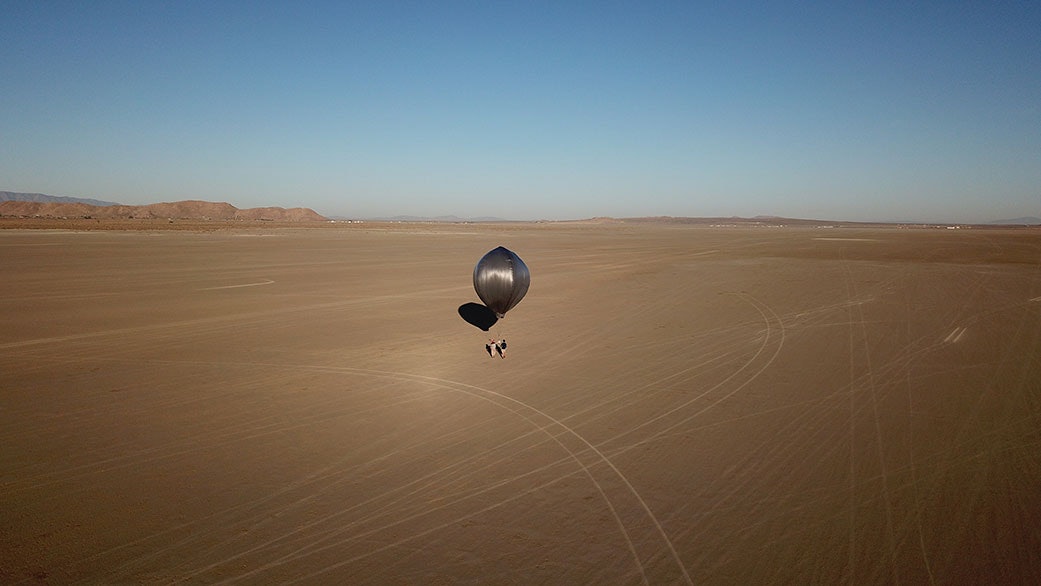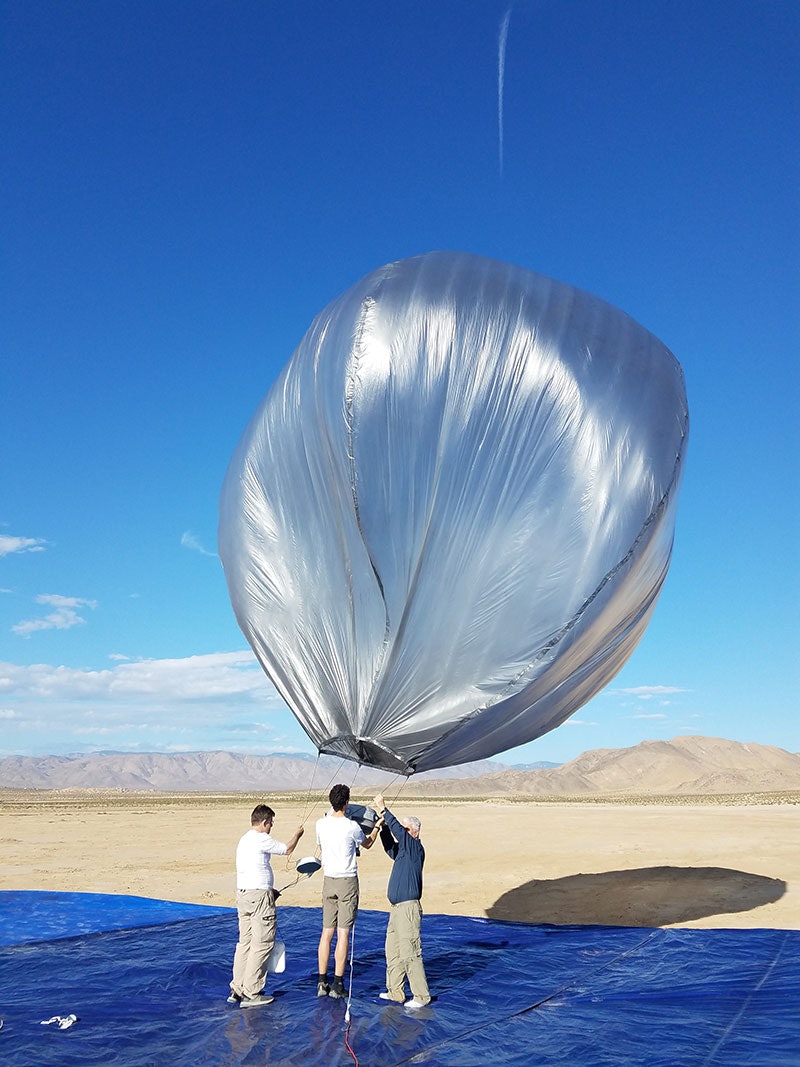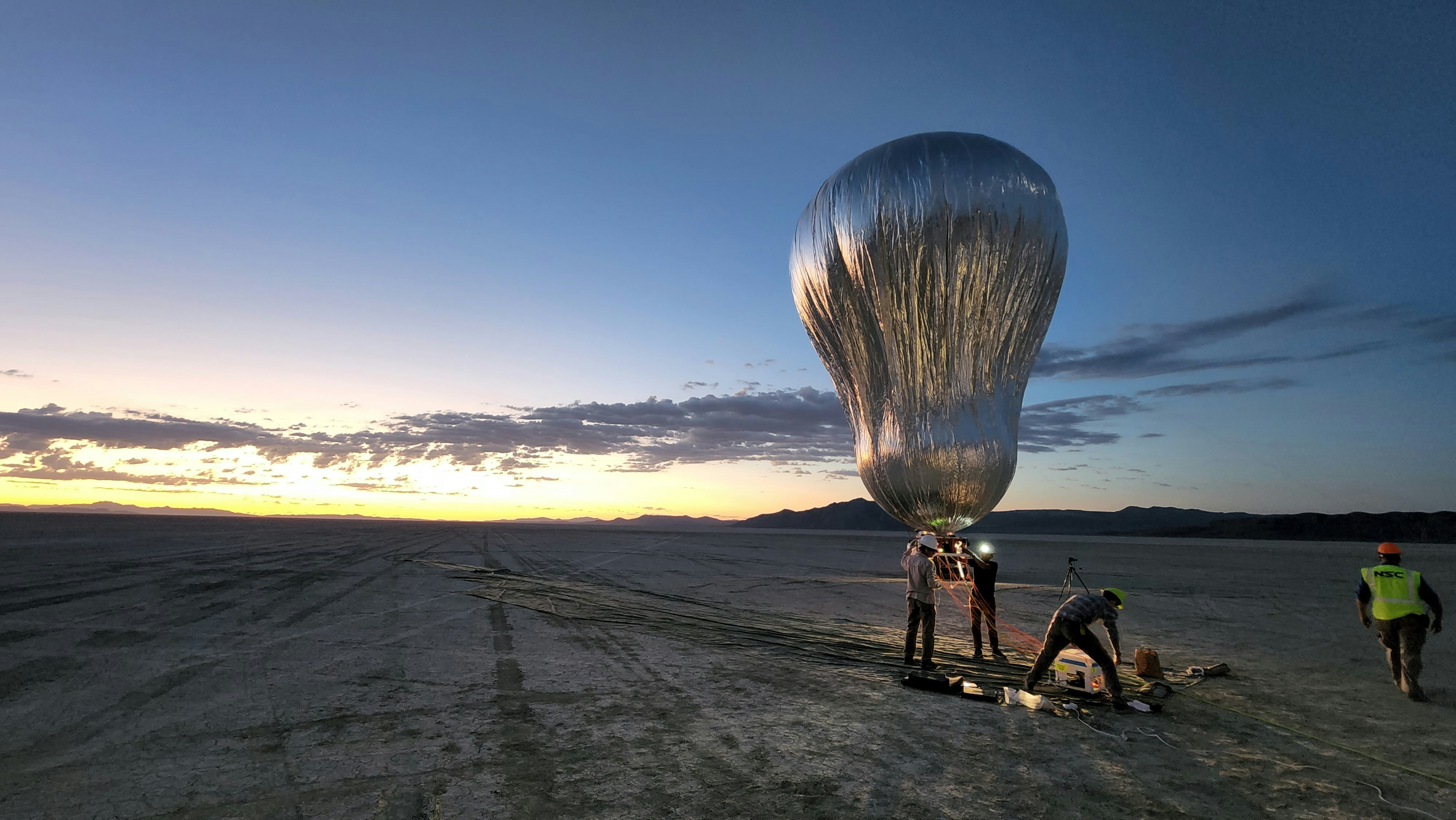
For years, Daniel Bowman, a senior scientist at Sandia National Laboratories, has relied on a few simple supplies for his research: tape, painter’s plastic, and charcoal dust. He uses these everyday items to create huge, inexpensive balloons that can sail into the stratosphere using only the power of the Sun.
“[They’re] basically giant, flying trash bags,” Bowman tells Inverse.
But trash they are not. The balloons carry important devices that listen in on Earth’s sounds — from earthquakes to the rhythmic motion of ocean waves crashing. Sensing major events and natural processes from the stratosphere gives Bowman and fellow researchers an important way to document what’s happening on our planet. Similar balloons might one day sail through other planets’ atmospheres, too.
At the Acoustical Society of America conference this week, Bowman and colleague Siddharth Krishnamoorthy, a research technologist at NASA Jet Propulsion Laboratory, presented their findings from ongoing research into Earth’s stratospheric sounds. They also outlined how similar techniques could be used to explore Venus’ hellish landscape.
Ears in the stratosphere
The stratosphere offers a unique respite from the rest of Earth’s atmosphere. It’s too high up for passenger airplanes and too low for satellites — meaning that there’s less sky traffic. And it’s still close enough to the ground to pick up sound waves with the right equipment.
Balloons can carry up super-sensitive microbarometers to this calm space and detect low-frequency sound waves happening all over the planet. Called infrasound, these noises are just outside the range of what we’re able to hear.
Despite the fact that we can’t sense it, Earth is full of infrasound. These frequencies are emitted by many natural processes, such as storms, ocean waves, and seismic events, emitting vibrations that can be picked up from miles above where they're happening.
“There's this incredible soundscape in the sky,” Bowman says, and researchers have only just begun to tune into it.
While some balloon-bound sensing tests took place during the 1960s, formal scientific efforts to record infrasound in the atmosphere didn’t happen until the past few decades. In fact, researchers are still learning exactly what sounds they’re hearing in stratospheric recordings.
“There are a lot of sounds that we record and we don't know where they're coming from,” Bowman says. It’s likely that many of these unidentified noises are mundane, created by sources like airplane turbulence, meteors, or even large industrial facilities with giant, rumbly fans.
Matching each of these sounds with their sources is an ongoing puzzle. But piecing it together could create a new way for researchers to detect events from the sky alone — which could be especially helpful for exploring planets where the ground is hard to reach.
Balloons on Venus
In the past few years, Bowman and colleagues have identified many noisy events from Earth’s stratosphere, using data from the ground to verify what they heard. They’ve pinpointed human-made sources like explosions and city noise, and identified the first earthquake from the sky in 2019.

Knowing that the balloon-based detection method works on earthquakes means that researchers could one day pick up on seismic events from other planets, too. Mars is known to have quakes of its own — appropriately called Marsquakes — which the InSight mission was able to detect in its lifespan on the Red Planet from 2018 to 2022.
Venus, on the other hand, is suspected to have Venusquakes just like its rocky cousins, but none of the spacecraft to land on the planet were ever able to detect one directly. Blame it on Venus’ harsh environment, which has a thick, suffocating atmosphere and surface temperatures around 900 degrees Fahrenheit. Back in the 1970s and 80s, the Soviet Union sent several landers to the planet’s surface, with the longest-surviving one lasting just over two hours.
“They actually got cooked from the inside, if we're going to talk about morbid deaths of robots on Venus,” Krishnamoorthy tells Inverse. “The landers went in a pressure vessel that kept the heat from the outside from coming in, but it also kept the heat from the inside [from] going out.”
The Soviets also sent a pair of balloons into the Venusian atmosphere during the 1985 Vega missions, which survived for about two days — a comparatively impressive feat. Since then, no balloons have made it back to the planet, but Krishnamoorthy says that they would be a powerful tool for future exploration.

Not only would the planet’s harsh environment be easier to tolerate from above, but sound also travels better through Venus’ dense atmosphere. “The same event on Venus would produce a signal on the surface that is about 60 times stronger than the Earth,” Krishnamoorthy explains.
And even though the design and materials of a Venus-bound balloon would be a lot different than the ones used on Earth, they would carry similar equipment to detect the signals of seismic events that are analogous to ones on our home planet.
Decoding signals
Balloons could provide a wealth of knowledge beyond seismology, Krishnamoorthy says. Being in the atmosphere, they could also detect chemical compounds, probe the planet’s magnetic field, or map out its geology, as long as they’re carrying the right tools.
And balloons could be useful to study other elusive bodies in the Solar System, as well. One potential target is Saturn’s moon, Titan, due to its dense atmosphere.
For the time being, no future Venus missions are slated to carry balloons. But Krishnamoorthy and colleagues will keep building up the library of detectable sounds from Earth’s sky and work on prototype balloons to prepare for future opportunities.
“Anything that flies on a mission honestly has … usually, like a 20-year journey behind it,” he says. “So that's basically where we are. We're just trying to get into a place where, when the opportunity comes, we're ready to do that.”







